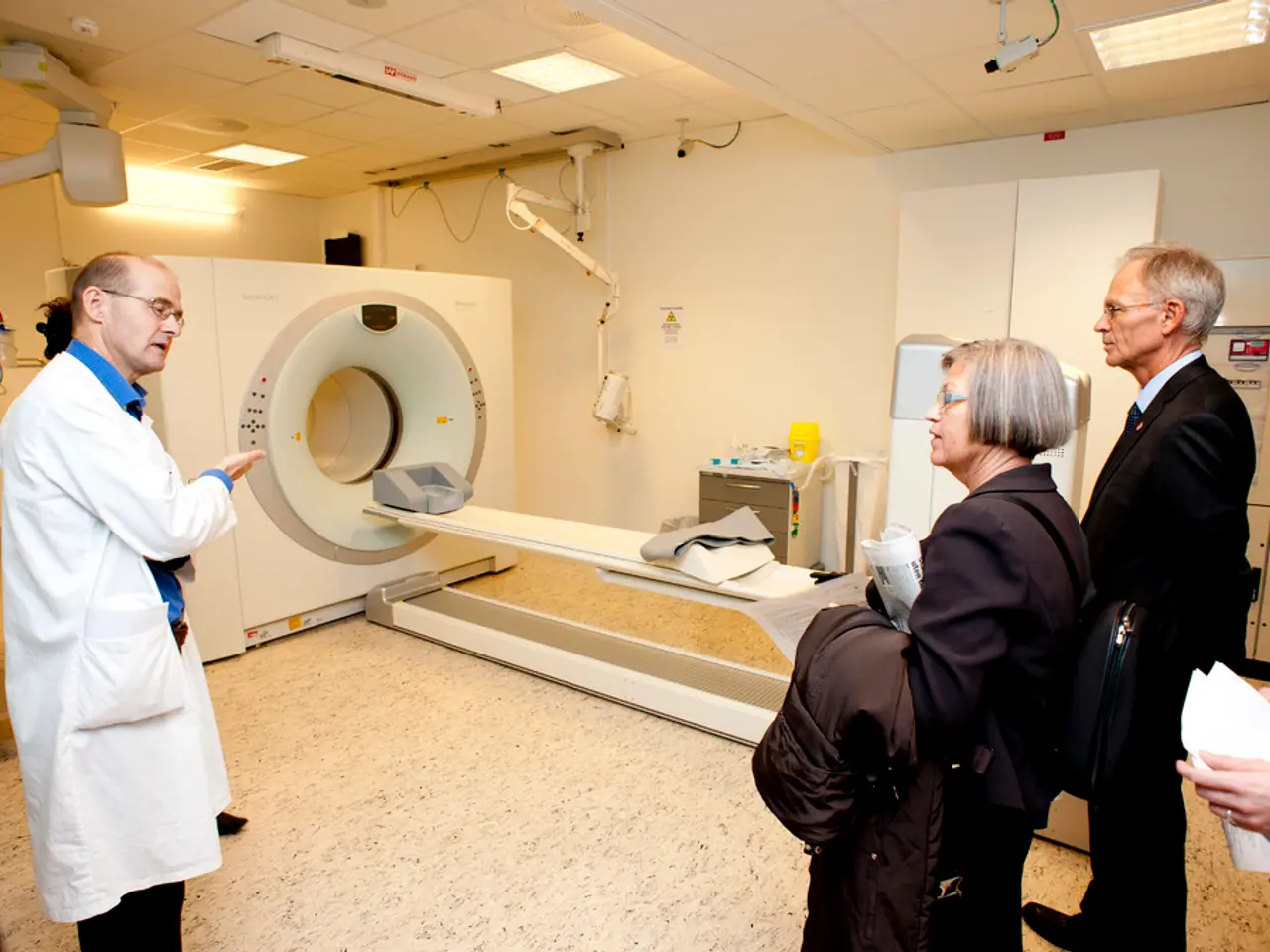Differences between CT and MRI scans: an overview
In the realm of medical imaging, two techniques stand out for their ability to provide valuable insights into the human body: Computerised Tomography (CT) scans and Magnetic Resonance Imaging (MRI) scans. Both methods are instrumental in diagnosing a wide array of medical conditions, each with its unique advantages and considerations.
CT scans, also known as CAT scans, use X-rays to create detailed images of the body. This technology, which involves ionizing radiation, is particularly effective in visualising bone structures and is faster for detecting acute injuries such as fractures or brain bleeding. However, the radiation exposure carries some risk, especially with repeated scans and in younger patients. It is not suitable for pregnant women due to potential harm to unborn babies.
MRI scans, on the other hand, employ magnetic fields and radio waves to generate detailed images of tissues. These scans do not use radiation, making them safer in that aspect. However, the strong magnetic field makes MRI unsuitable for patients with certain metal implants like pacemakers or some artificial joints. MRI scans can cause heating in the body, loud noise that may affect hearing, and may trigger claustrophobia or anxiety.
When it comes to procedure, CT scans are relatively quick, typically taking about 10 to 15 minutes, and the scanner is usually an open ring design allowing more space and comfort. MRI scans, however, take longer, often 30 to 45 minutes or more, and the patient lies inside a long tunnel-like machine which can feel tight and noisy due to loud knocking sounds.
In terms of image quality, CT scans excel in visualising bone structures, while MRI scans provide superior soft tissue contrast, making them invaluable for detecting abnormalities like brain tumors, multiple sclerosis, small lesions, and detailed soft tissue evaluation, especially in the brain, spinal cord, muscles, and organs.
In summary, CT scans are faster, better for bone injuries and emergencies, but involve radiation, while MRI scans provide more detailed images of soft tissues without radiation but take longer and have limitations with metal implants and patient comfort. A doctor will decide which scan is appropriate based on a range of factors, such as the medical reason for the scan, the level of detail that is necessary for the images, whether a woman is pregnant, and whether a person has claustrophobia or other factors that might make MRI scans difficult for them to tolerate.
[1] https://www.nhs.uk/conditions/ct-scan/ [2] https://www.nhs.uk/conditions/mri-scan/ [3] https://www.radiologyinfo.org/en/info/mri [4] https://www.radiologyinfo.org/en/info/ct
[Image: A side-by-side comparison of a CT and MRI scan]
- Science has begun exploring the potential use of CT scans and MRI scans in predicting various medical conditions, such as obesity and depression, by analyzing patterns in these images.
- Although both CT scans and MRI scans have proven beneficial in diagnosing medical conditions, they also have limitations when it comes to health issues like eczema and psoriasis, which often require more specialized therapies and treatments in the field of health and wellness.
- In an effort to improve diagnostic accuracy and patient comfort, researchers are developing Advanced Quantification (AQ) techniques for MRI scans that could potentially reduce the negative effects like claustrophobia and noise sensitivity, making them more suitable for a wider range of medical conditions.
- Coincidentally, ongoing studies have suggested a correlation between obesity and an increased risk of developing medical conditions like depression and eczema, making it crucial to promote preventive measures and early detection to improve overall health outcomes.
- When it comes to monitoring and managing medical conditions like psoriasis, eczema, depression, and obesity, medical practitioners stress the importance of regular screenings using various imaging techniques, such as CT scans and MRI scans, as part of a comprehensive health care plan.




